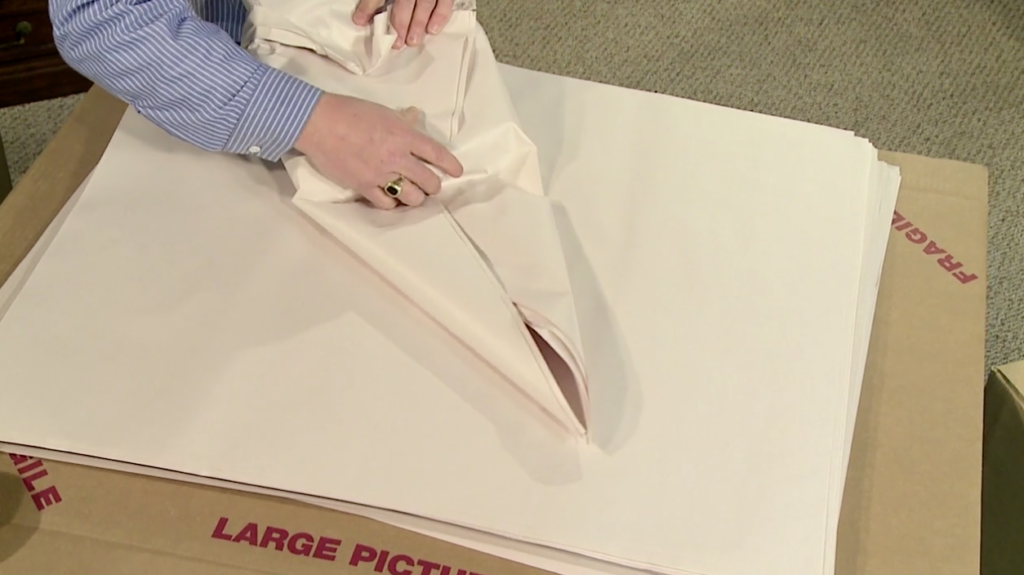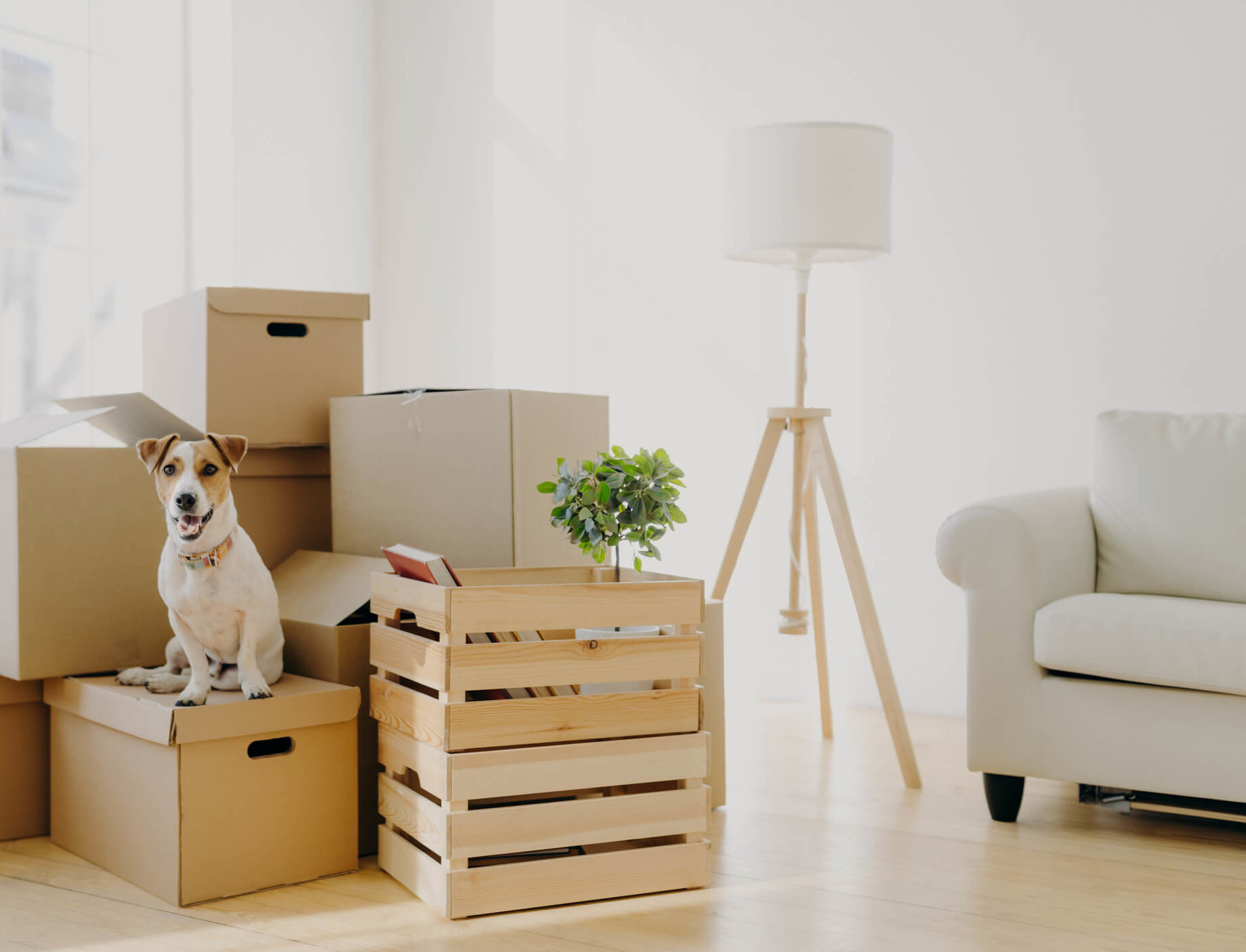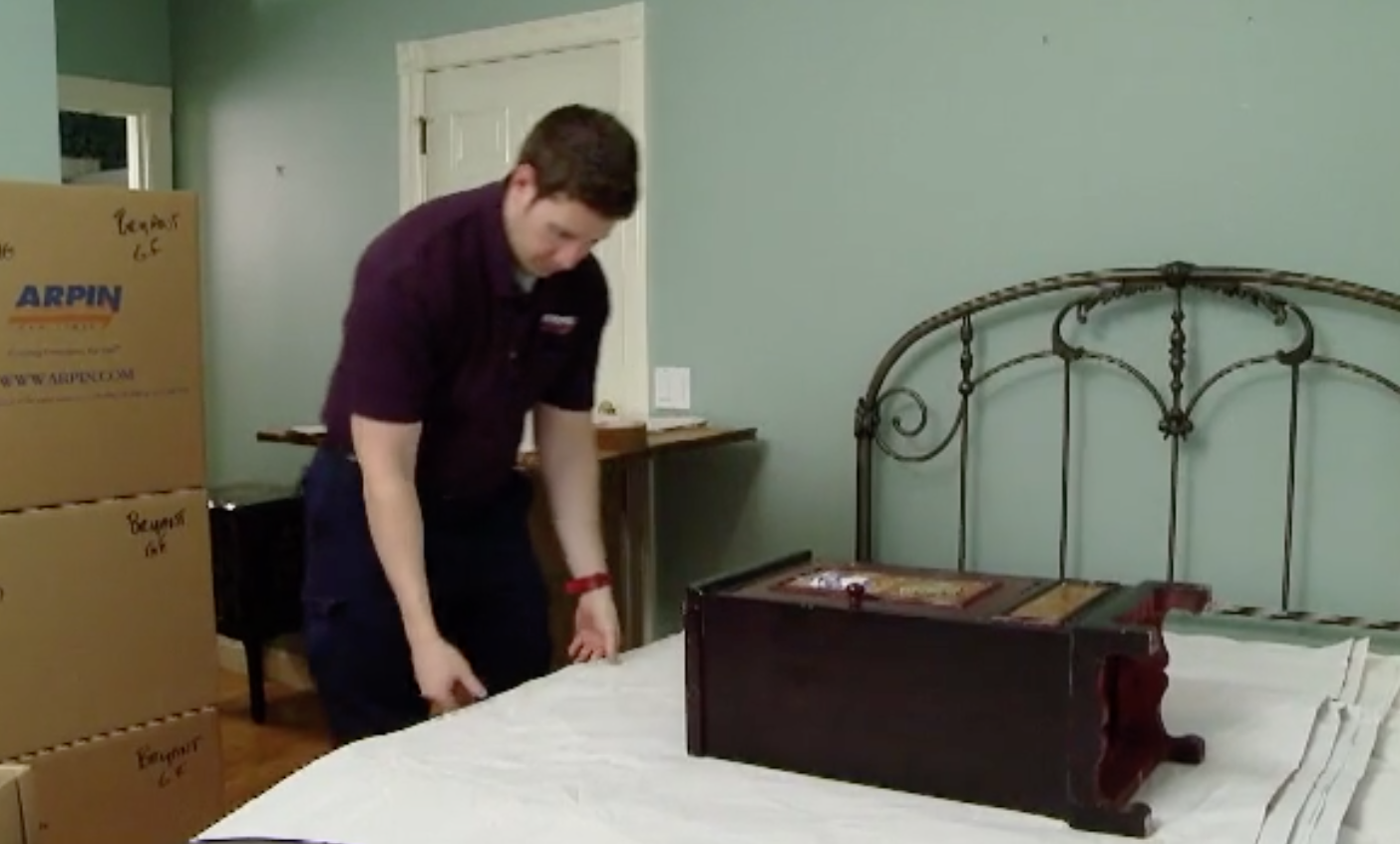Understanding Packing Science
Physics of packing
 Before we begin to pack, we need to understand the physics of packing and the forces placed upon the items when we pack. There are basically three forces affecting packed items during a move; compression, tension, and vibration. Compression is a force that attempts to flatten or squeeze a material. Tension is a force that pulls or stretches a material. Vibration is the rapid alternation of these forces. The effects of these forces on shipment items can be amplified by the extremes in temperature experienced during the move.
Before we begin to pack, we need to understand the physics of packing and the forces placed upon the items when we pack. There are basically three forces affecting packed items during a move; compression, tension, and vibration. Compression is a force that attempts to flatten or squeeze a material. Tension is a force that pulls or stretches a material. Vibration is the rapid alternation of these forces. The effects of these forces on shipment items can be amplified by the extremes in temperature experienced during the move.
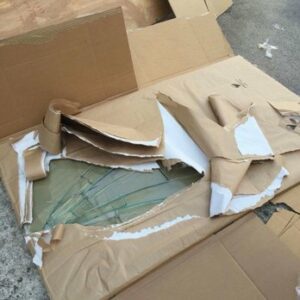 Each material that an item is constructed from will have a different tolerance to these forces. Some materials like wood, metal, and some types of plastics will perform well regardless of the type of forces acting on them or the temperature. However, there are other materials that will only perform well under specific conditions. Items made of glass, pottery, or ceramics can endure very large compressive forces but will break almost immediately if they’re subjected to even small tensile forces.
Each material that an item is constructed from will have a different tolerance to these forces. Some materials like wood, metal, and some types of plastics will perform well regardless of the type of forces acting on them or the temperature. However, there are other materials that will only perform well under specific conditions. Items made of glass, pottery, or ceramics can endure very large compressive forces but will break almost immediately if they’re subjected to even small tensile forces.
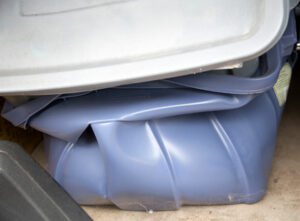 Plastics can be very durable at room temperature but will deform at high summer temperatures or they can become very brittle at low winter temperatures
Plastics can be very durable at room temperature but will deform at high summer temperatures or they can become very brittle at low winter temperatures
Utilizing the same perspective as the best moving company in RI, Arpin of RI, you must evaluate the materials an item is made from and how it is constructed in order to:

- Understand the natural strengths and weaknesses of the materials that each item is constructed from.
- Understand the age of the item to estimate how the behavior of its materials may have changed over time.
- Understand how the item is constructed and try to determine where it is most susceptible to damage.
- Understand what type of forces will be applied to that item based on how it is positioned.
- Understand the expected temperatures that the item will be exposed to during the move
Understanding why paper wrapping is so effective at protecting packed items
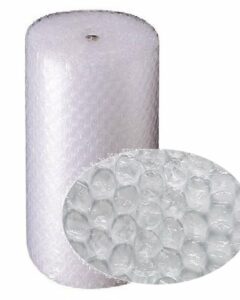 The objective of wrapping items in white newspaper is protection. But the protection of the item doesn’t come from the paper itself, but rather from the air that is trapped between the layers of paper.
The objective of wrapping items in white newspaper is protection. But the protection of the item doesn’t come from the paper itself, but rather from the air that is trapped between the layers of paper.
Trapped air is a superior shock absorber. Bubble wrap is probably the best example of this principle. Bubble wrap consists of two thin plastic layers sealed together trapping air bubbles between them. The thin plastic layers alone provide zero impact protection. However, the hundreds of trapped air bubbles do. Bubble wrap is expensive and bad for the environment. While paper is cheap, plentiful, and 100% renewable
The objective of wrapping items in white newspaper is protection. But the protection of the item doesn’t come from the paper itself, but rather from the air that is trapped between the layers of paper.
Trapped air is a superior shock absorber. Bubble wrap is probably the best example of this principle. Bubble wrap consists of two thin plastic layers sealed together trapping air bubbles between them. The thin plastic layers alone provide zero impact protection. However, the hundreds of trapped air bubbles do. Bubble wrap is expensive and bad for the environment. While paper is cheap, plentiful, and 100% renewable.
 Air pockets similar to bubble wrap can be replicated using plain old newsprint. These air pockets are created by wrapping articles with multiple layers of paper. Anyone who’s ever popped a lunch bag knows how effective paper can be at trapping air.
Air pockets similar to bubble wrap can be replicated using plain old newsprint. These air pockets are created by wrapping articles with multiple layers of paper. Anyone who’s ever popped a lunch bag knows how effective paper can be at trapping air.
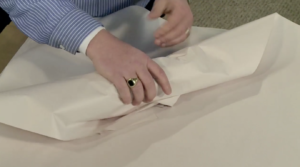 The principal here is to fold the paper over onto itself loosely so it traps a small amount of air between object and the paper.
The principal here is to fold the paper over onto itself loosely so it traps a small amount of air between object and the paper.
 Almost every item requires multiple layers of paper. Always remember that wrapping an object once with two sheets of paper is not nearly as effective as wrapping it twice with one sheet. Both techniques use the same amount of material, but the first technique traps only one layer of air, and the second traps two.
Almost every item requires multiple layers of paper. Always remember that wrapping an object once with two sheets of paper is not nearly as effective as wrapping it twice with one sheet. Both techniques use the same amount of material, but the first technique traps only one layer of air, and the second traps two.
Now that we’re properly set up to pack, we have to decide what needs to be packed and what is the best order to pack those items.
Let’s use the same basic rules that the best movers in RI use. There are just four reasons to pack an item into a carton rather than shipping it loose.
These reasons are:
- Protection
- Sanitation
- Security
- Consolidation
Professional Arpin RI packers use these four assessments to determine if an item requires packing in a carton or not. As a novice packer, you should as well. The decision of whether to pack an item into a carton is actually a series of four questions
Question One. Are the items more  susceptible or less susceptible to breakage if they are shipped unpacked?
susceptible or less susceptible to breakage if they are shipped unpacked?
 Question Two. Are the items more susceptible or less susceptible to environmental or biological contamination if they are shipped unpacked?
Question Two. Are the items more susceptible or less susceptible to environmental or biological contamination if they are shipped unpacked?
 Question Three. Are the items more susceptible or less susceptible to getting lost if they are shipped unpacked?
Question Three. Are the items more susceptible or less susceptible to getting lost if they are shipped unpacked?
 Question Four. Are all of the item’s parts more susceptible or less susceptible to getting misplaced if they are shipped unpacked?
Question Four. Are all of the item’s parts more susceptible or less susceptible to getting misplaced if they are shipped unpacked?
If the answer to any of these questions is “more susceptible”, then pack that item in a carton.
Individual packing assessments
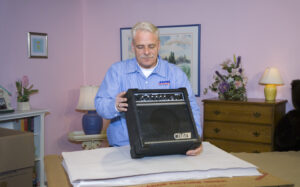 Breakage Protection is the most common reason to pack an item in a carton. The vast majority of household items require physical protection from impact, vibration, or pressure. This includes all of the common-sense items like china, glassware, and mirrors, but also includes some borderline items as well. Take an electric guitar amp for example. While the amp case is sturdy enough to travel unpacked, the front and rear panels have many dials and knobs which are quite fragile. Wrapping the amp in export wrap and packing it in a carton eliminates any chance of damage or loss. FYI, all rock bands pack their amps in hard cases before they’re put on the truck by the roadies.
Breakage Protection is the most common reason to pack an item in a carton. The vast majority of household items require physical protection from impact, vibration, or pressure. This includes all of the common-sense items like china, glassware, and mirrors, but also includes some borderline items as well. Take an electric guitar amp for example. While the amp case is sturdy enough to travel unpacked, the front and rear panels have many dials and knobs which are quite fragile. Wrapping the amp in export wrap and packing it in a carton eliminates any chance of damage or loss. FYI, all rock bands pack their amps in hard cases before they’re put on the truck by the roadies.
 Sanitation is the second reason for packing and it applies to all clothing, linens, toys, pillows, and mattresses. The most experienced movers in RI know keeping items free of environmental and biological contaminants by packing them in cartons is critical. For instance, the customer has a white bassinet for a newborn infant. Although it is quite durable, wrapping it in export wrap and packing the bassinette in a carton will keep it perfectly clean and not allow dust, pollen, or other airborne pollutants to contaminate the fabric and potentially harm the baby.
Sanitation is the second reason for packing and it applies to all clothing, linens, toys, pillows, and mattresses. The most experienced movers in RI know keeping items free of environmental and biological contaminants by packing them in cartons is critical. For instance, the customer has a white bassinet for a newborn infant. Although it is quite durable, wrapping it in export wrap and packing the bassinette in a carton will keep it perfectly clean and not allow dust, pollen, or other airborne pollutants to contaminate the fabric and potentially harm the baby.
 Security is the third reason for packing items in a carton, not just to guard against pilferage, but also for accidental loss. Consider a plastic strongbox used for important papers
Security is the third reason for packing items in a carton, not just to guard against pilferage, but also for accidental loss. Consider a plastic strongbox used for important papers
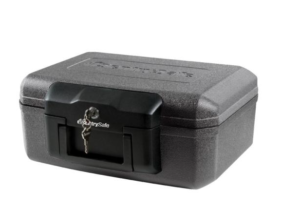 Even though the box itself is very durable and the contents inaccessible, the box is still vulnerable. An item like this will only be identified by its inventory sticker. If the sticker fell off and the item could not be identified, the customer’s important papers could be lost to them while their case sits intact in an anonymous warehouse. Packing it in a carton eliminates any risk of loss.
Even though the box itself is very durable and the contents inaccessible, the box is still vulnerable. An item like this will only be identified by its inventory sticker. If the sticker fell off and the item could not be identified, the customer’s important papers could be lost to them while their case sits intact in an anonymous warehouse. Packing it in a carton eliminates any risk of loss.
 Consolidation is the final reason for packing an item into a carton rather than shipping it unpacked. Consolidation implies that items with component pieces are best shipped together in one defined space. Let’s consider a shop vac.
Consolidation is the final reason for packing an item into a carton rather than shipping it unpacked. Consolidation implies that items with component pieces are best shipped together in one defined space. Let’s consider a shop vac.
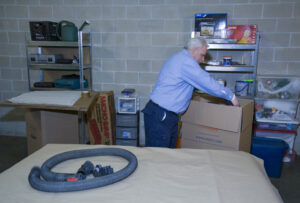 While it is certainly durable enough to ship without breaking, packing it together in a large carton with all of its hoses, attachments, and even an extension cord will prevent any lost or misplaced parts. In addition, packing it all together makes it easy to access everything all at once at the destination.
While it is certainly durable enough to ship without breaking, packing it together in a large carton with all of its hoses, attachments, and even an extension cord will prevent any lost or misplaced parts. In addition, packing it all together makes it easy to access everything all at once at the destination.
